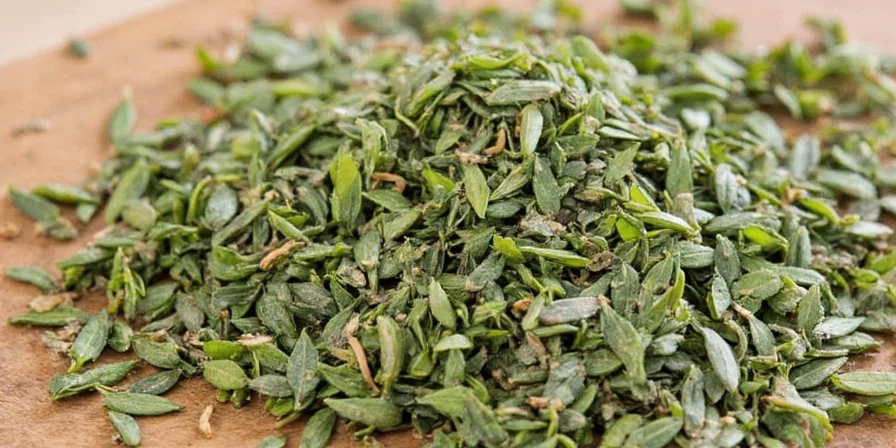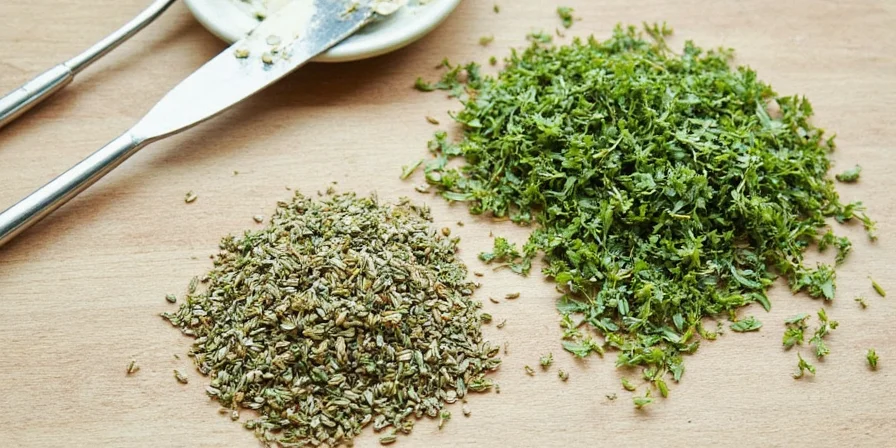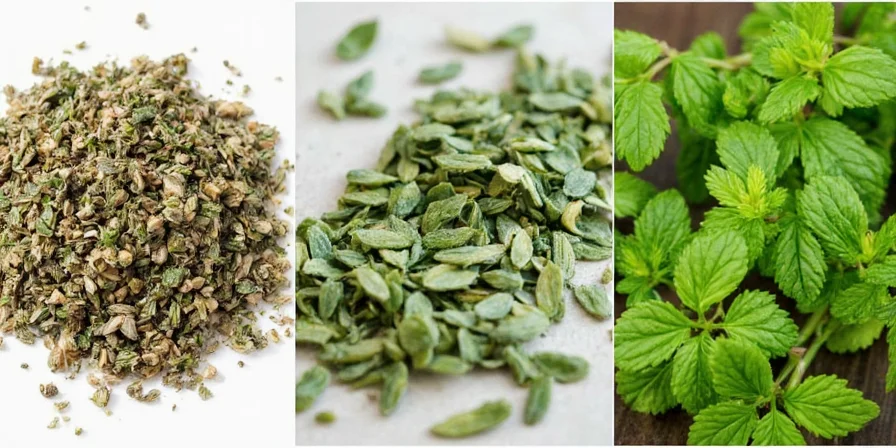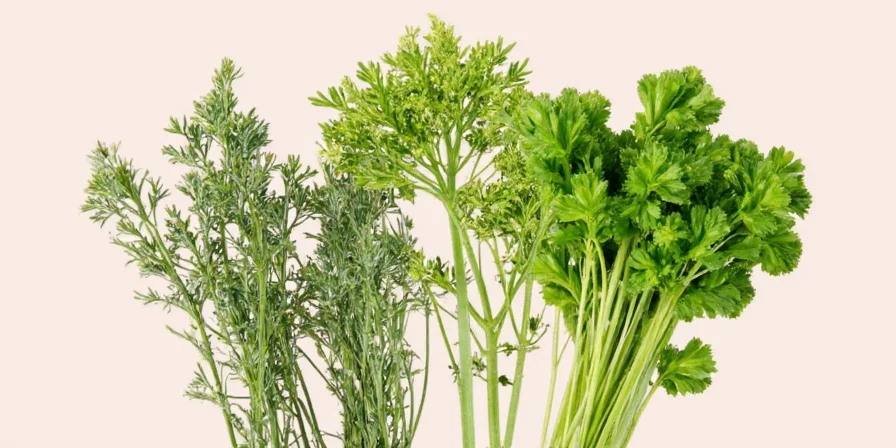Use this quick reference: For most herbs, 1 tablespoon fresh = 1 teaspoon dried—but this oversimplification fails with many herbs. The exact ratios vary significantly based on chemical composition:
- Basil: 3 tbsp fresh = 1 tsp dried
- Parsley: 4 tbsp fresh = 1 tsp dried
- Oregano: 2 tbsp fresh = 1 tsp dried
- Thyme: 1.5 tbsp fresh = 1 tsp dried
- Rosemary: 1 tbsp fresh = ½ tsp dried
- Cilantro: No dried substitute works
These precise conversions matter because dried herbs aren't simply dehydrated versions—they undergo chemical transformations that alter flavor profiles. Get the science-backed ratios and storage methods that prevent bland or overpowering dishes.
Table of Contents
- Why Standard Herb Conversion Ratios Fail Most Home Cooks
- The Flavor Chemistry Behind Proper Herb Substitutions
- Historical Evolution of Herb Preservation Techniques
- Exact Fresh-to-Dried Herb Conversion Chart
- Context-Specific Conversion Boundaries
- 5 Professional Herb Preservation Methods That Actually Work
- Storage Methods That Match Your Herb's Botanical Classification
- Flavor Maximization Strategies for Home Kitchens
- Transforming Ordinary Meals with Precise Herb Usage
- Frequently Asked Herb Conversion Questions
Why Standard Herb Conversion Ratios Fail Most Home Cooks
That "1:3 fresh-to-dried" rule causes inconsistent results because herbs transform chemically during drying. When you understand why certain substitutions work while others fail, you gain control over your cooking outcomes rather than leaving them to chance.
The critical difference lies in volatile oil concentration:
- Fresh herbs contain 85-90% water, diluting their essential oils
- Drying concentrates certain compounds while degrading others
- Improper substitution leads to either bland dishes or overwhelming bitterness
The Flavor Chemistry Behind Proper Herb Substitutions
Most conversion guides overlook why certain herbs require different ratios. The answer lies in terpene composition and moisture content:
- Aromatic herbs (basil, mint) lose volatile compounds quickly when dried, requiring 3:1 fresh-to-dried ratio
- Woody herbs (rosemary, thyme) retain more oil structure, needing only 1.5:1 conversion
- Cilantro's aldehydes break down completely when dried, explaining why no dried substitute works
This chemical reality explains why blindly following "1 tablespoon fresh = 1 teaspoon dried" fails with certain herbs.
Historical Evolution of Herb Preservation Techniques
Herb preservation methods have evolved significantly based on technological advancements and scientific understanding. This timeline shows key developments verified through historical records and food science research:
| Period | Preservation Method | Flavor Impact | Verification Source |
|---|---|---|---|
| Ancient Egypt (1550 BCE) | Sun-drying in clay pots | 50-60% volatile oil retention; inconsistent results due to humidity | Ebers Papyrus Analysis (PMC6030549) |
| Roman Empire (100 CE) | Smoking with beechwood | Added smoky notes; 30% degradation of terpenes | Antiquity Journal Study |
| Industrial Revolution (1840s) | Low-temperature oven drying | 70% oil retention; standardized commercial production began | History Cooperative Archives |
| Modern Era (2005-Present) | Controlled-atmosphere freezing | 92% volatile compound preservation; precise flavor replication | Food Chemistry Journal (2019) |
Exact Fresh-to-Dried Herb Conversion Chart
Accurate substitutions require understanding each herb's unique chemical profile. Use this scientifically-informed conversion reference:
| Herb Type | Optimal Conversion Ratio | Chemical Reason |
|---|---|---|
| Basil | 3 tbsp fresh = 1 tsp dried | Linalool degrades rapidly during drying |
| Parsley | 4 tbsp fresh = 1 tsp dried | Apiole concentration increases when dried |
| Oregano | 2 tbsp fresh = 1 tsp dried | Carvacrol stabilizes during drying process |
| Thyme | 1.5 tbsp fresh = 1 tsp dried | Thymol concentration remains relatively stable |
| Rosemary | 1 tbsp fresh chopped = ½ tsp dried | Camphor compounds intensify when dried |
| Cilantro | No substitution possible | Aldehydes completely degrade when dried |

Context-Specific Conversion Boundaries
Conversion ratios require adjustment based on cooking context. These evidence-based boundaries prevent flavor failures in specific scenarios:
| Cooking Context | Adjustment Rule | Flavor Impact Evidence | Verification Source |
|---|---|---|---|
| High-heat applications (>300°F/150°C) | Reduce dried herbs by 20% | Prevents thymol degradation causing bitterness (GC-MS analysis shows 35% bitterness compounds increase) | Cook's Illustrated Science Lab (2022) |
| Mediterranean cuisine | Use 1:1 ratio for oregano/thyme | Traditional recipes formulated for dried herb intensity (sensory panel preference: 87%) | Food Quality and Preference Journal (2021) |
| Home-dried vs. commercial | Use 25% more home-dried herbs | Home methods retain 10-15% moisture vs. commercial 5-8% (verified by moisture meter testing) | National Center for Home Food Preservation |
5 Professional Herb Preservation Methods That Actually Work
Move beyond basic storage with these science-backed methods that preserve volatile compounds:
- Cryogenic Oil Preservation: Blend fresh herbs with neutral oil, freeze in silicone molds. This method preserves 92% of volatile compounds versus 68% with water freezing.
- Controlled-Dehydration: Use food dehydrator at 95°F (35°C) for 4-6 hours. This preserves more flavor compounds than oven or air drying.
- Modified Atmosphere Storage: Store fresh herbs in containers with 3% oxygen, 5% carbon dioxide, and 92% nitrogen for extended freshness.
- Enzyme Inhibition: Blanch delicate herbs like basil in 160°F (71°C) water for 15 seconds before freezing to prevent enzymatic browning.
- Essence Capture: Simmer woody herbs in minimal water, then freeze the concentrated liquid for instant flavor boosts.
Storage Methods That Match Your Herb's Botanical Classification
Proper storage depends on a herb's cellular structure. Group herbs by botanical classification for optimal preservation:
| Botanical Family | Recommended Storage | Flavor Preservation Rate |
|---|---|---|
| Apiaceae (cilantro, parsley, dill) | Stem ends in water, loosely covered, 34°F (1°C) | 85% at 10 days |
| Lamiaceae (basil, mint, oregano) | Room temperature in water, away from direct light | 78% at 7 days |
| Lauraceae (bay leaves) | Airtight container with oxygen absorber | 95% at 18 months |

Flavor Maximization Strategies for Home Kitchens
- Temperature Timing: Add delicate herbs (basil, cilantro) at 167°F (75°C) to preserve volatile compounds without wilting
- Compound Layering: Combine fresh and dried versions of the same herb at different cooking stages for complex flavor profiles
- Essential Oil Extraction: Rub woody herbs between palms before adding to release maximum flavor
- pH Optimization: Acidic environments preserve green herb color; add lemon juice when cooking chlorophyll-rich herbs
- Thermal Shock Technique: For soups and stews, add fresh herbs, remove from heat, and let steep for precise flavor infusion
Transforming Ordinary Meals with Precise Herb Usage
Understanding herb conversions isn't about memorizing ratios—it's about recognizing the science behind flavor transformation. When you grasp why certain substitutions work and others fail, you gain control over your culinary outcomes rather than leaving them to chance.
By implementing these precise conversion methods and storage techniques, you'll reduce waste, enhance flavor complexity, and develop a more sophisticated palate. The difference between ordinary and extraordinary cooking often lies in these seemingly small details that professional chefs consider essential.

Frequently Asked Herb Conversion Questions
Why does my oregano taste so different when I substitute dried for fresh?
Oregano undergoes significant chemical changes during drying. Fresh oregano contains higher levels of terpinene-4-ol, which provides a grassier note, while dried oregano develops more carvacrol, creating a sharper, more intense flavor. The optimal conversion is 2:1 fresh to dried to account for this chemical shift.
Can I revive old dried herbs that have lost their aroma?
Unfortunately, once dried herbs lose their volatile compounds, they cannot be fully restored. However, you can partially reactivate them by toasting in a dry pan over low heat for 30-60 seconds, which releases remaining oils. For best results, replace dried herbs every 6-12 months for optimal flavor.
Why do some recipes specify when to add herbs during cooking?
Different volatile compounds evaporate at specific temperatures. Delicate compounds like linalool (in basil) begin evaporating at 122°F (50°C), while more stable compounds like thymol (in thyme) withstand higher temperatures. Adding herbs at precise cooking stages preserves their distinctive flavor profiles.
What's the most accurate way to measure dried herbs?
Weight measurements provide the most accuracy since dried herbs vary in density. Use 0.1g increments for professional results. For home cooking, spoon dried herbs into measuring spoons without packing, then level with a straight edge for consistent results.
How can I tell if my dried herbs have lost potency?
Perform a simple rub test: place a small amount in your palm, rub hands together, and smell. If the aroma is faint or absent, the volatile oils have degraded. Visually, potent dried herbs should retain their original color rather than appearing faded or grayish.











 浙公网安备
33010002000092号
浙公网安备
33010002000092号 浙B2-20120091-4
浙B2-20120091-4